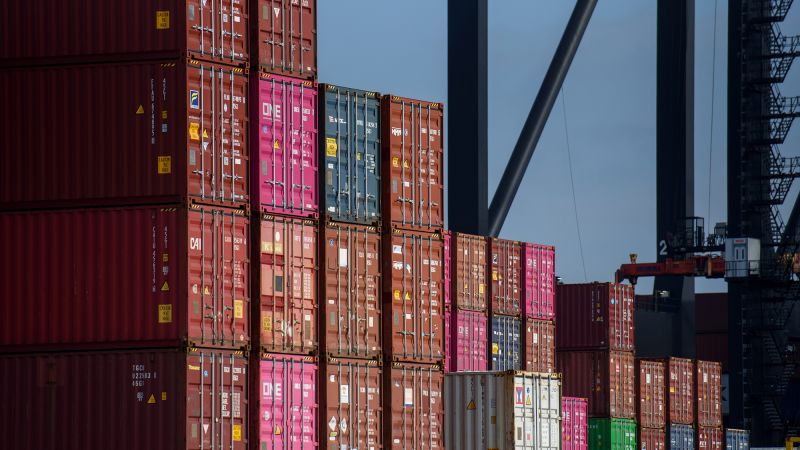 |
|
The article delves into the potential repercussions of tariffs, particularly those proposed by former President Donald Trump, building upon historical precedent and contemporary economic analysis. It begins by noting the repeated postponements of Trump’s “reciprocal” tariffs, a move ostensibly designed to incentivize trade deals with the United States. However, the author emphasizes that the mainstream economic consensus is skeptical of tariffs, viewing them as detrimental to the very countries that implement them. These negative impacts are not simply theoretical; they are borne by workers and consumers in the form of higher prices and decreased economic output. The article acknowledges that Trump's tariffs have not yet had a significant impact on inflation or job growth, but economists caution against complacency. The argument is made that these tariffs operate with a delayed reaction, and the long-term consequences could become apparent by the end of the year, potentially undermining the administration's perception of success.
The core of the article rests on the idea that tariffs function as taxes on imports, invariably increasing costs for producers and, ultimately, prices for consumers. The article highlights that roughly half of all US imports are comprised of intermediate products, which are necessary for the manufacture of finished American goods. When tariffs increase the cost of these imported components, it makes the final product more expensive, which ultimately hurts the American consumer. This point is underscored by examples from Trump's first term. The imposition of steep tariffs on $283 billion worth of imports in 2018 resulted in a complete pass-through of these levies into domestic prices, directly impacting the wallets of American consumers. The relative price stability observed in the US over the past two decades, particularly in the goods sector, is largely attributed to low tariffs and the influx of cheaper imports, particularly from China after it joined the World Trade Organization. Any reversal of this trend threatens to disrupt this equilibrium and raise prices for American consumers.
Beyond the impact on consumer prices, the article examines the macroeconomic consequences of tariffs, arguing that they are likely to reduce America's overall economic output. Drawing on a 2020 study analyzing data from 151 countries over several decades, the article highlights that tariffs have a persistent adverse effect on a country's GDP. This negative impact can be attributed to several factors. First, tariffs impede specialization. When tariffs are low, countries can focus on industries where they hold a competitive advantage and engage in international trade. Higher tariffs distort these patterns, leading to lower labor productivity. Second, the higher cost of imported inputs, as discussed above, can depress economic output. Finally, the uncertainty generated by erratic trade policies, particularly those associated with Trump, can discourage investment and further depress economic activity. Data from the National Federation of Independent Business suggests that this uncertainty is already weighing on American companies' willingness to invest, with the share of small businesses planning capital outlays hitting its lowest level since the early days of the COVID-19 pandemic.
The article further explores the impact of tariffs on job creation, challenging the notion that they automatically lead to increased employment. On the contrary, research suggests that higher tariffs can actually result in increased unemployment. The reason for this apparent paradox lies in the fact that tariffs can raise the cost of imported goods, thereby harming downstream industries that rely on these inputs. As Dartmouth College professor Doug Irwin notes, the 2018 steel tariffs, for example, resulted in a net loss of jobs because the number of people employed in downstream industries that use steel far exceeds the number of people employed in the steel industry itself. A study by the Federal Reserve Board corroborates this finding, concluding that higher input costs resulting from US tariff hikes in 2018-19 led to job losses in American manufacturing. This damage was further compounded by retaliatory tariffs imposed by other countries on US exports.
The article acknowledges the potential costs associated with free trade, including job losses in communities exposed to foreign competition and increased dependence on far-flung manufacturers. However, it emphasizes that tariffs are generally not seen as an effective solution to these challenges. Subsidies for specific industries are considered a more direct and less distortionary tool for promoting domestic manufacturing. Furthermore, the article highlights the broader geopolitical implications of trade policy, arguing that closer trade relations can reduce the likelihood of conflict between nations by giving countries more to lose in any potential confrontation. The article concludes by emphasizing that while free trade may have certain costs, the benefits generally outweigh the risks, and that tariffs are rarely the optimal policy response.
The discussion of Trump's trade policies within the article includes implied critique by using the opinions of mainstream economists, the data from research studies, and direct quotes from financial experts to make the case that the proposed tariffs are likely to backfire. The analysis of the potential harm to the US economy, including the adverse impact on consumers and overall GDP, combined with the emphasis on the uncertainty created by erratic trade policies and the potential for retaliatory tariffs from other countries, contributes to the negative perspective on Trump's actions. By presenting alternative policy solutions such as subsidies for specific industries, the article further suggests that there are better ways to address the challenges posed by free trade. The structure of the article, which explores both the immediate and long-term consequences of Trump's proposed tariffs, helps to build a comprehensive argument against the effectiveness and desirability of the policy. The article thus serves as a caution against the use of tariffs as a primary trade tool, especially those advanced by Trump.
